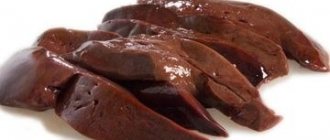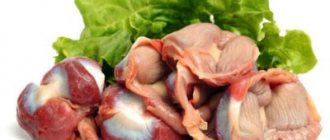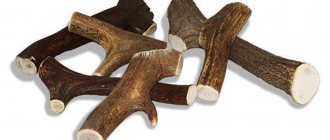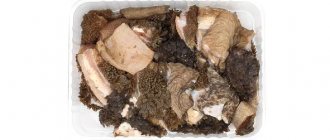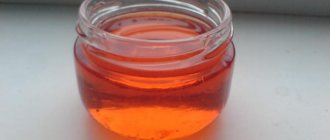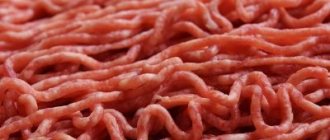For dog owners, there are two options for feeding your pet - dry food, or stick to a natural type of feeding.
In the case of natural nutrition, the following question arises: is it possible to replace meat with meat products, and in particular with minced bones. The main reason for the controversy is that for dogs, as carnivores, it is healthier to eat pieces of meat with intact fibers, but, on the other hand, minced meat can be used as a convenient and cheap protein supplement. Now on the dog food market there is a special bone mince for dogs and minced meat and bones. The difference, as the name suggests, is in the composition, but the type of grinding of the constituent products also plays an important role.
Can dogs have ground bones?
Unfortunately, not every dog owner has the opportunity to feed their pet exclusively healthy and easily digestible foods.
If the financial crisis has affected you, you may be thinking about how you can reduce your dog's food costs. For example, you can include minced dog bones in his diet, which is one of the cheapest food products. Alas, this is its only significant advantage. Let's start with the fact that the so-called minced meat can be made from anything. Of course, there is practically no meat as such. At best, it consists of offal - stomachs, liver, lungs, brains; at worst - fat, skin, tails and similar ingredients that do not provide any benefit or nutritional value.
All components are finely ground, so it is not possible to determine the composition of the minced meat by eye. All you have to do is take the manufacturer’s word for it.
Particularly worth mentioning is minced chicken bones for dogs. In addition to bones, it may contain meat trimmings (such minced meat is called meat and bone). If unscrupulous manufacturers do not ensure that all bones are evenly and thoroughly crushed, the total mass may contain sharp fragments that can injure the walls of internal organs. Be sure to read about the dangers of chicken bones.
In general, there is no consensus among dog owners about minced meat. Some answer the question “can dogs have minced bones” in the affirmative, others – negatively. The former are convinced that minced meat made from seeds is rich in calcium, so they recommend giving it to puppies who have a calcium deficiency in their bodies. Opponents counter: bones, even when crushed, are not digested by a dog’s stomach, therefore, firstly, calcium is absorbed from them very poorly; secondly, food that is not digested does not satiate, and a dog who has tasted such a dish will not be able to get rid of the feeling of hunger.
By the way, as a source of calcium, which is very important for a puppy, it is recommended to give either special vitamin preparations, or eggshells crushed in a coffee grinder, or bone meal.
Another serious disadvantage of minced bone is that, once it enters the intestines, it is easily compressed into one large and hard mass, which clogs the intestines and leads to prolonged constipation.
Meat and bone
It is quite acceptable to use minced meat and bones in feeding if it is prepared without any violations, i.e. does not contain pieces of sharp bones or large fragments.
In addition to bones, it contains lean meat, meat trimmings, cartilage, skins and offal. The ratio of ingredients varies. At home, it can be prepared from chicken necks.
Types of minced meat
Minced fish for dogs is prepared from river or sea fish, after removing large bones from it. But mostly minced meat is made from meat products.
Meat
Made from beef (most often, second grade), rabbit, lamb, horse meat and other types of meat.
Pork is not used as dog food due to its high fat content, which can impair the functioning of the animal's liver.
By-products are also added to minced dog meat, most often peeled or unpeeled beef tripe (one of the cow's stomachs). Meat and offal are ground through a meat grinder. No spices are added.
Chicken
It is prepared from chicken meat trimmings, skin, wings, and sometimes fat is added. Ground chicken may contain bone debris, such as ground chicken carcasses. Ready minced meat is often too fatty for animal livers.
You can prepare the minced meat yourself by passing the breast meat and leg meat through a meat grinder. Some dogs are allergic to chicken. In this case, you can cook ground turkey.
Bone
Bone mince contains ground pork, chicken or beef bones, as well as bone marrow and animal skin. Minced bones are cheaper, but less filling. It is used as a healthy supplement containing calcium, which is beneficial for the dog's musculoskeletal system.
However, there is a high risk that the bone mince will contain a sharp particle (this is especially true for chicken tubular bones), which can injure the mucous membrane or digestive organs.
Veterinarians often prohibit feeding animals this type of minced meat.
Should I feed them?
From what has been said, it is clear that a bone for a dog is not a “minor food product” at all, but only a “sports equipment”, and edible is very relative. But, like any sports equipment, it must meet safety requirements.
Do chicken bones meet these requirements?
If we are talking about the tubular bones of various legs and wings, the answer is clear - no, they don’t answer. And that's why.
A raw beef bone, not boiled white in a saucepan, that a dog can chew leisurely and tastefully for hours will not do it any harm.
Tubular
Thin tubular chicken bones are a different matter. The dog will chew them instantly and immediately swallow them, like regular food. He will not get any pleasure from the process of “working on the bone”. Even the actual muscles of the dog’s jaws will not have time to properly feel the load from this fleeting work. What kind of “training” is that?
But when a dog bites into tubular chicken bones, they crumble into long and sharp fragments that can cause trouble. Dogs, like all canine predators, swallow food without chewing.
At the same time, bone fragments that a dog has swallowed can very easily injure the animal’s esophagus, stomach and intestines. In addition, the digestive system of dogs is not very adapted to processing bird bones - after all, their ancestors hunted mainly hares and deer, and not chickens and quails.
The consequences of swallowing a sharp bone can be very severe - even perforation of the intestine, to peritonitis. And not always even a procedure that most likely requires surgery will be able to save the dog.
Dosage
Puppies can be given two tablespoons of minced meat, including bone mince, per feeding, mixing it with porridge, soup or vegetables. Adult animals should be given bone mince no more than once a day, and not as a main dish, but as an additive to porridge or soups.
Constantly feeding your pet bone mince can lead to intestinal obstruction. Minced meat and chicken should make up 50-60% of the portion, and offal – 10% of the daily ration.
Reviews
Owners
Victoria, owner:
“I may upset someone, but this is not dog food, and not porridge either. You need beef tripe, beef, cottage cheese. Minced meat is poorly digestible due to the peculiarities of the gastrointestinal tract of dogs, which can cause illness, and porridge breaks down the stomach. The dog runs the risk of turning into something like a barrel.”
Elena, owner:
“I feed my Doberman homemade minced hedgehogs. The portion is enough for a day: I take 1 kg of minced meat (I make it from beef and offal), add a glass of rice (cook), 2 raw eggs, rub 3 medium carrots - I form hedgehogs and put them in the oven for 40 minutes. The dog really likes it.”
Tatiana, owner:
“A dog is a predator. She needs meat in pieces, and the minced meat flies in transit through the intestines, no nutritional value. The dog doesn't eat enough. Therefore, only meat (at least 60% of the portion), the rest is porridge with water from rice or buckwheat and stewed vegetables - 20% each. Just not potatoes or white cabbage.”
Vet
Dmitry, veterinarian:
“Many dog owners have a misconception that they can feed minced meat instead of meat. This way the product is absorbed faster and better. This is not true. After all, a dog does not chew food, it swallows it, tearing off pieces. The gastrointestinal tract of dogs is designed in such a way that it is better to digest food in pieces. Therefore, feeding minced meat is impractical and even harmful.”
Cooking methods
It is better to give your dog minced meat raw, it contains more protein. On the other hand, eating raw meat is fraught with parasite infection. Boiled minced meat loses only 5-6% of its protein if it is placed in boiling water. Both raw and boiled meat are digested equally normally by animals. It is advisable to freeze raw minced meat in the freezer for 24 hours before feeding.
Recipe for porridge with minced meat and vegetables:
- Boil rice or buckwheat until tender (one portion serving).
- Grate the carrots into it on a medium grater (one part serving).
- Add minced meat (two parts) and a tablespoon of odorless vegetable oil.
Minced meat can also be combined with Brussels sprouts, tomatoes, cucumbers, beets, pumpkin, and lettuce.
It is useful to feed your pet minced meat with the addition of fruit, especially apples.
Your dog may develop an allergy from citrus fruits. You can also finely chop the greens, including nettles scalded with boiling water. The product can be frozen and given as needed.
Can it be fish?
Minced fish should be from sea fish, and if it is river or lake fish, then red species. Before cooking it, large bones must be removed from the fish. This product should be combined with vegetables, which can be given raw or poached after chopping. Cannot be combined with meat or dairy products.
In addition to vegetables, a couple of spoons of rice would be a good addition: it is better to take unpolished, brown (for large breeds) or a small amount of rye flakes that need to be steamed.
What dogs can you give it to?
Starting from three weeks of age, puppies can be given any minced meat in a volume of 50 g per kilogram of weight. Adult dogs can be given minced meat three to four times a week. You should not feed minced meat to dogs prone to allergies or poor digestion.
Minced chicken should be given carefully to small breed dogs, such as pugs, as they are often allergic to chicken. An elderly pet should be given minced meat in a smaller volume (20%) than an adult dog. For pregnant dogs, minced meat should be mixed with vegetables to prevent constipation.
Is there any benefit?
We've found that the potential harm that chicken bones can cause to your friend is enough to remove them from your dog's diet once and for all. Now a few words about some benefits.
In general, bones, especially raw ones, are a complete source of calcium and phosphorus for the animal’s body, as well as protein - that is, associated cartilage and meat residues.
But two or three random chicken bones, even raw ones, cannot bring practically any tangible benefit. Moreover, they are digested quite poorly. But they can easily serve as a source of infection brought from an unknown poultry farm.
Advice.
There is a nutritious product that could very well be classified as chicken bones. These are chicken necks. They contain quite a large amount of animal protein, as well as calcium and phosphorus.
The only thing to remember is that during long-term storage, all offal products lose their beneficial properties. Frozen chicken necks should be stored for no more than 2-4 months.
What is minced meat made from and why is it dangerous for dogs?
A quality product is usually made from beef stomach without the use of any additives. But the cheaper ones may also contain other chopped by-products, such as lungs, skin, liver, tails, and fat.
Of particular danger is chicken bone mince, which is made from chopped chicken bone tissue and bone marrow, or meat and bone mince, which contains a small amount of meat, mainly trim, skin, which contains a lot of fat that is harmful to dogs.
Minced bone is introduced into the diet of animals due to its low cost, as well as for the purpose of replenishing calcium in the pet’s body. However, if calcium is absorbed, it is in very small quantities, and there are safer and calcium-rich foods. Ground bones are not digested and the animal is not satisfied, experiencing a constant feeling of hunger.
Minced bone is also dangerous for dogs because if fed in large quantities, it clogs the stomach and intestines, thereby disrupting the digestion process and causing constipation. In case of uneven grinding, the mass may contain large sharp fragments, which, when entering the stomach and intestines, can injure the mucous membrane, which in turn leads to more serious consequences.
Frequently feeding dogs minced meat, especially puppies over 3 months old, increases the risk of developing stomach ulcers.
Alternative to bones - dog treats
It’s still good for your four-legged friend to chew something for your teeth, gums, or just for fun. This can be different types of dry food. As well as all kinds of chewing toothpick sticks. They maintain the healthy state of the pet’s oral cavity, are able to remove plaque, and stimulate the appearance of new teeth in puppies. They are also an excellent toy that will keep your dog occupied for a long time.
If you want to pamper your pet, give him something meaty for a treat, opt for various dummies made of rawhide. They can be offered to small dogs. Models made of pressed leather are large, dense, and hard. They are suitable for large breed dogs.
I would like to think that after reading this article, the last doubts about why dogs should not have any types of bones on their menu will disappear, especially if they are constantly given to them.
Dog breeders will confirm that their faithful charges become real family members. You need to treat them accordingly and choose the optimal diet appropriate for the breed.
Recommendations for feeding dogs with minced meat
There are times when it becomes necessary to replace meat with minced meat, for example, it is not possible to purchase natural whole meat or feeding only meat is impossible, for example, in nurseries where a large number of dogs are kept. In such situations, raw ground beef should be given, frozen overnight and without additives. This product should be given in small quantities at one feeding, mixed with porridge or soup.
It is acceptable to feed minced meat to puppies aged 1.5-2 months. Starting from 3 months, puppies are given exclusively pieces of meat.
Sources:
https://toi-terer.ru/kostnyj-farsh-dlja-sobak.php https://bobik.online/korm/farsh.html https://v-mire-sobak.ru/korm-dlja-sobak/ farsh-dlja-sobak.html
How to choose a chewing bone?
Even a properly chosen meat and bone product can lead to unpleasant consequences; many owners refuse to give it to dogs, depriving them of a tasty treat and an additional source of nutrients. You should not deny your pet such a treat; there is an opportunity to choose chewing bones sold in specialized stores.
They contain: rawhide or starch base, vitamins and minerals, useful substances. Such a delicacy toy will completely satisfy the need for chewing rough food, clean the mouth, massage the gums and will not cause harm. When choosing a delicacy similar to natural, consider:
- dog size. Treats that are too small can get stuck in the throat and cause choking and suffocation. You should not give a huge treat to a large dog; a medium size will do;
- taste - they focus on the preferences of the pet itself, giving several types;
- texture: hard, soft, special chewy. Focus on the animal’s age, dental condition and preferences;
- additives: calcium, from tendons (for allergy sufferers), gelatin (source of collagen, vitamins, suitable for pregnant bitches), chicken (complete analogue without unpleasant consequences).
Do not leave your puppy alone with such a tasty treat - his jaws are still poorly developed and will not be able to cope with the product.
Chemical composition of rabbit meat
Rabbit meat contains 9 vitamins out of 13 studied, as well as the vitamin-like compound choline (B4). High percentage of vitamin B12 (2 times higher than the daily requirement), niacin (B3) - 45%, as well as folic acid (B9), compared to other types of meat. The latter substance is involved in all life processes, but is not synthesized independently by the animal body and is supplied only with food.
Meat contains 16 mineral elements. Cobalt exceeds the daily requirement by 1.5 times. There is a high content of iron, potassium, sulfur, phosphorus, selenium, zinc, and copper.
Pros of rabbit meat
When consumed regularly, rabbit meat has beneficial effects on all body systems. From the digestive side:
- accelerates the secretion of digestive juices;
- dilutes bile, facilitating its movement through the bile ducts;
- helps improve lipid metabolism;
- accelerates the regeneration of tissues of the gastrointestinal mucosa;
- normalizes intestinal function.
From the cardiovascular system:
- makes blood vessels elastic, improves their permeability;
- prevents blood clotting;
- increases hemoglobin;
- saturates the heart with oxygen.
Eating rabbit meat helps preserve vision, maintain reproductive function, and improve skin and coat. This product normalizes blood sugar, improves oxygen supply to the brain, strengthens bones, ligaments and muscles.
Boiled or raw?
We have already found out that the tubular bones of chicken legs or wings are not suitable as food, either raw or cooked.
As for chicken by-products, which also contain bone material, there is no need to specially cook them. Moreover, it is undesirable. Boiled chicken necks completely lose all their nutritional value.
When their bones enter a dog’s stomach, they are not digested, but simply crumble into dust. Such dust in large quantities sticks together into clumps, and this can cause intestinal obstruction.
For a puppy
This is especially dangerous for a small animal. It is enough to scald the product with boiling water and cool. These scalded chicken necks are quite safe to give even to a puppy.
Advice.
Another option is to cook porridge for your dog with the addition of raw meat products. The addition of minced meat and bones is good - so to speak, “for the smell.” Your friend will eat this porridge with great pleasure.
By the way, you can put regular tubular chicken bones there for cooking during cooking. When the porridge is ready, such bones, of course, should be thrown away. Any cereal is suitable for porridge - wheat, barley, oatmeal, pearl barley, rice.
Nutritional value
Rabbit is a low-calorie meat, only 135-175 kcal per 100 g of product. By nutrients:
- proteins: 20.1 g, or 27% of the daily value;
- fats: 6-10.5 g (depending on the age and fatness of the animal), or 8-15% of the daily requirement;
- carbohydrates: 0.00 g.
Of all types of meat, rabbit has the least cholesterol - 57 mg, and is second only to chicken in terms of fat. Rabbit meat contains 29 amino acids, including 6 essential organic compounds, which cover the daily requirement by 30-50%.
Rabbit fat is unique in that it contains a lot of lecithin, which regulates the production of cholesterol, and saturated and unsaturated fatty acids are in ideal proportion, which has a beneficial effect on the breakdown of lipids. The presence of fat in the carcass depends on the feeding of the animal. It is practically absent if the rabbit has not seen concentrated feed.
